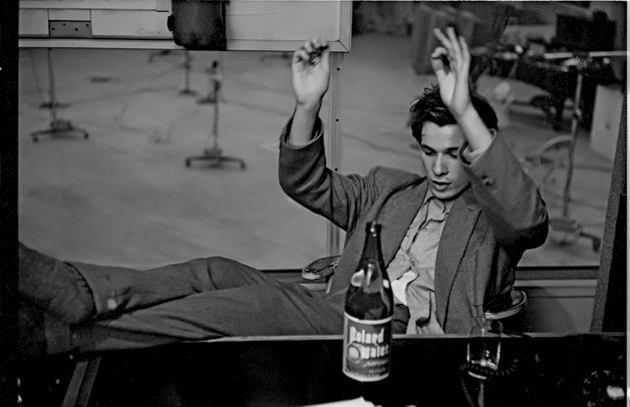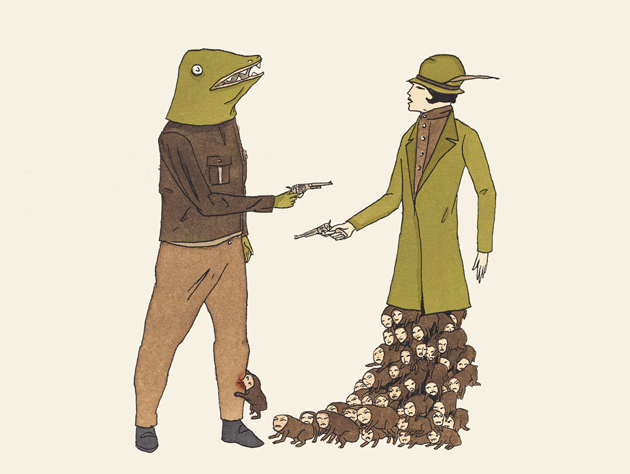
Untitled, 2000. Ink and gouache on paper.All images from "Marcel Dzama: Sower of Discord," courtesy Abrams Books.
The prolific Canadian artist Marcel Dzama is not yet 40, but he’s accumulated a body of paintings, collages, sculpture, dioramas, costumes, and film-design work that would be impressive from someone a decade his senior. You can experience the breadth of his talent in a great new collection, Marcel Dzama: Sower of Discord, out recently from Abrams Books.
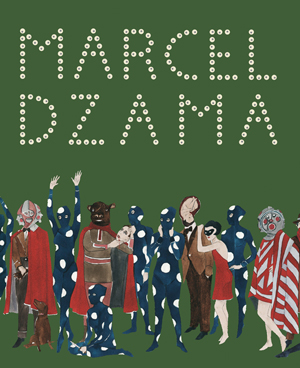
The coffee-table book, which showcases hundreds of Dzama’s works in various media, also includes a poster, writings from the artist Raymond Pettibon and the art historian Bradley Bailey, and three collaborative short stories by Dave Eggers—which I’ll admit I haven’t quite gotten to yet, even though I loved this and this.
Ah, but the artwork! Great artists are evocative, and Dzama’s work evokes all sorts of emotions: wistfulness, joy, fear, revulsion, wonder, arousal. Drawing inspiration from current events, revolutionary images, his esteemed predecessors (notably Marcel Duchamp, Francis Picabia, Oskar Schlemmer, and William Blake), and his own childhood fears and encounters, Dzama has developed a distinctive-yet-familiar style that’s at once playfully subversive, twisted, childlike, and disturbing.
Recurring themes and characters include anthropomorphic trees, real and fictional animals, flag-bearers, distinctively yonic octopi, hooded men and women with guns (Subcomandante Marcos meets Guantanamo Bay), and sensual dancers in two-tone, polka-dot catsuits. We see superheroes, bats and owls, hanging men, dismembered cowboys, snowmen, rabbits and bears, Pinocchios, surreal multi-species crime scenes, bestiality of a sort, children curled in grave-like underground dens, disembodied heads, and plenty of sex—some of it alluringly primal. The book explores Dzama’s intent with some of these elements, but you may want to simply experience them first, and discover what meanings they bring to the uninitiated.
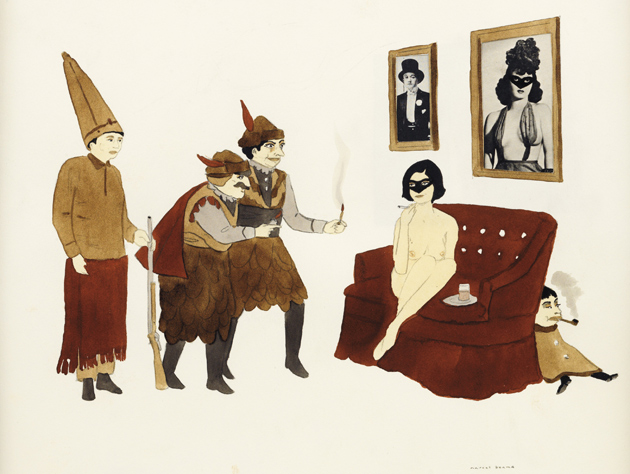

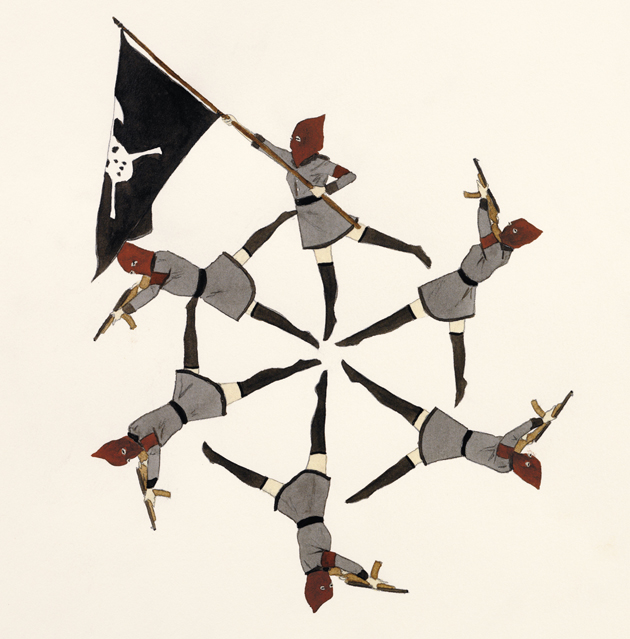
Dzama grew up in Winnipeg, where he struggled somewhat in school, partly because he’s dyslexic. He was constantly drawing, though, and settled on art school not from any high aspirations, but because “art was the only thing I was good at,” he tells filmmaker Spike Jonze in an included Q&A that, while fun and informative, needed some trimming.

In any case, Dzama was discovered by the New York City art aficionado and gallery owner David Zwirner, and he’s been on a tear ever since. His art has traversed the globe, appearing in esteemed spaces such as Manhattan’s Museum of Modern Art and Metropolitan Museum of Art, Le Centre Georges Pompidou in Paris, the Corcoran Gallery in Washington, DC, and Musée d’art contemporain de Montréal. Sought after by celebs and collectors who can afford him, his work has graced album covers by the likes of Beck and They Might Be Giants. (I first encountered it in Bed Bed Bed, a charming TMBG side project consisting of a CD and accompanying lyrics book—which I highly recommend for anyone with kids under seven.)
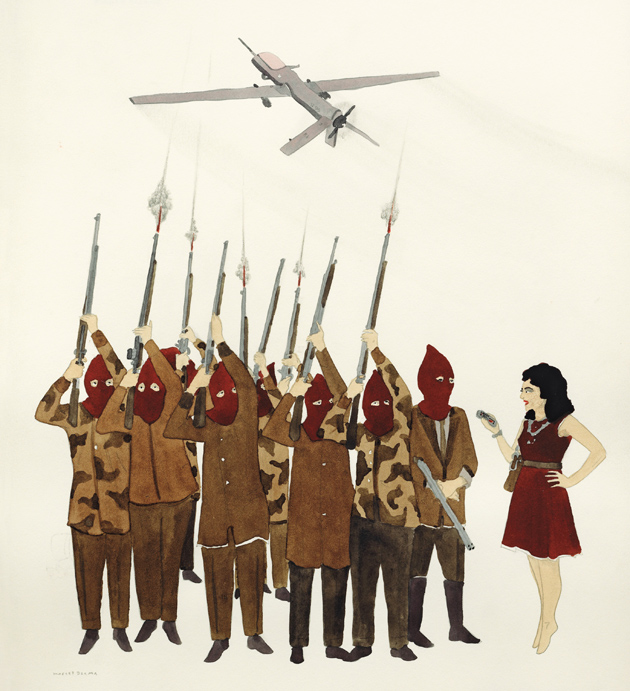
I’ll leave you with a few more examples from the book, which is worth owning. You might, however, want to keep it where your kids can’t reach until they’re of age. For instance, I wouldn’t want my nine-year-old stumbling across Dzama’s My Weekend in Berlin, which looks like a pretty exciting weekend. I’ve not included it here. Guess you’ll just have to buy the book.

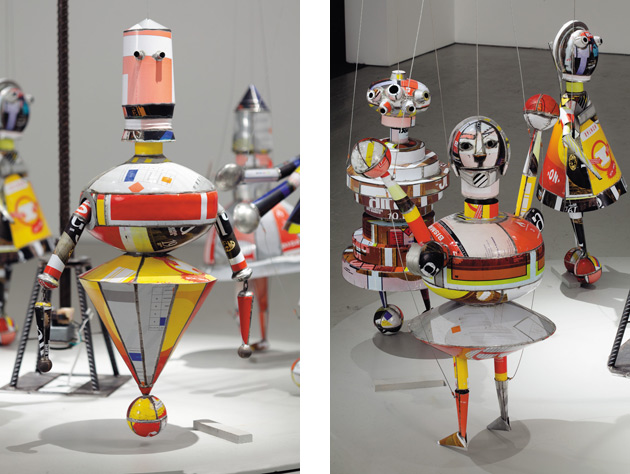

Marcel Dzama, courtesy Sies + Höke, Düsseldorf
Goodbye.
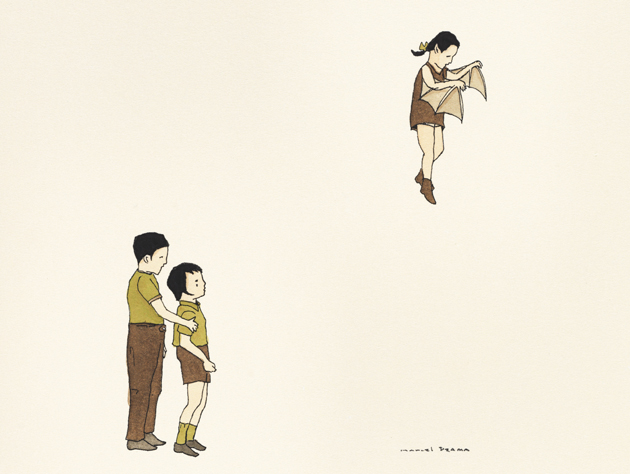
Correction: An earlier version of this review said Dzama was not yet 30. He was born in 1974.



